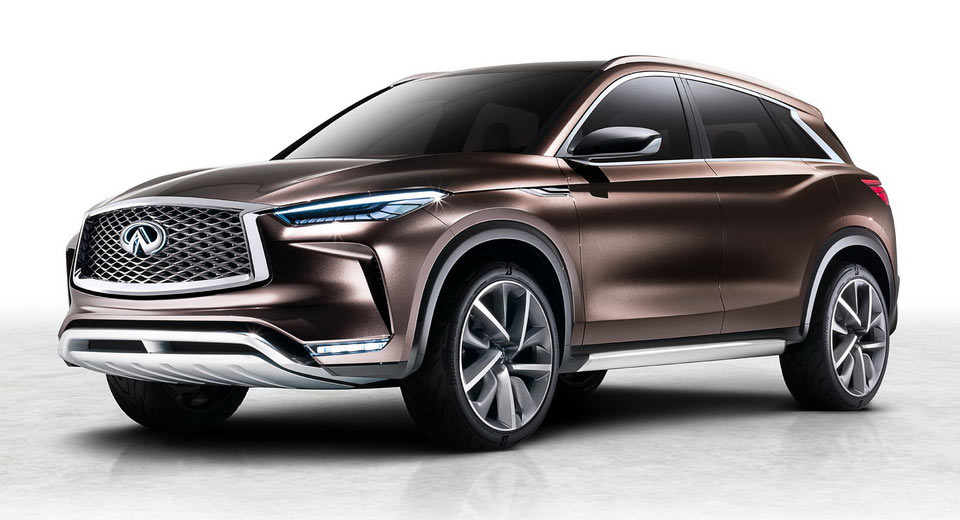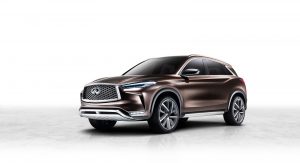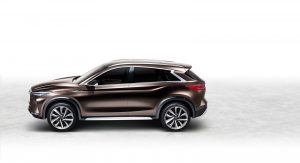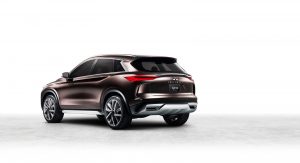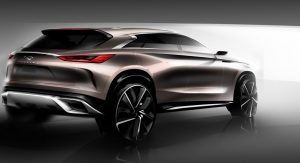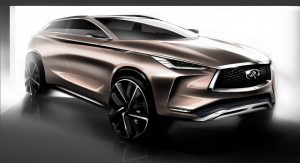Next year’s Detroit Auto Show will mark the global debut of the new Infiniti QX50 Concept, representing the brand’s vision for a next-gen mid-size premium SUV.
In terms of design, the QX50 Concept is an evolution of the 2016 QX Sport Inspiration, while attempting to show how the brand’s ‘Powerful Elegance’ design language could be adapted for a future production model.
The new concept features what Infiniti calls a “cabin-forward” silhouette, combining taut, muscular lines with flowing surfaces in order to obtain a dynamic yet practical appearance.
Inside, the “driver-centric, passenger-minded” cabin is a reflection of the exterior – blending progressive design with high levels of modern craftsmanship. The concept’s interior also reflects Infiniti’s desire to challenge conventional premium interior designs and introduce their own take on it.
“With the unveiling of the QX Sport Inspiration at the 2016 Beijing Auto Show, we showed the future of Infiniti QX models. The new QX50 Concept evolves this concept further and shows how Infiniti could develop its future presence in the fastest-growing vehicle segment globally,” stated company president, Roland Krueger.
The QX50 Concept will also preview Infiniti’s autonomous drive support technologies. Since the Japanese automaker wants to focus on driver engagement, their philosophy is that all future autonomous drive support systems should ensure the driver retains ultimate control over the vehicle.
In other words, the system will act more like a ‘co-pilot’, delegating more onerous driving tasks to the car – like navigating stop-start traffic on the highway or keeping track of surrounding vehicles. The QX50’s autonomous drive support systems are meant to preview the first production-ready incarnation of a technology pack that the automaker will insert into future production models.
Aside from the concept, Infiniti will also display their new ultra-efficient VC-Turbo engine technology at NAIAS. This power unit was first seen at this year’s Paris Auto Show, and represents the world’s first variable compression ratio engine, boasting 272 PS (268 HP) and 390 Nm (287 lb-ft) of torque.







